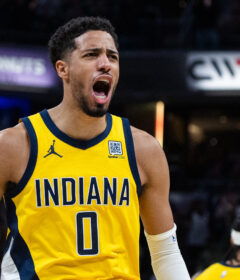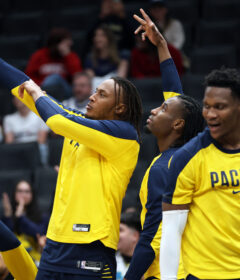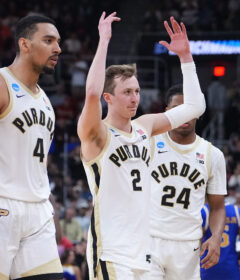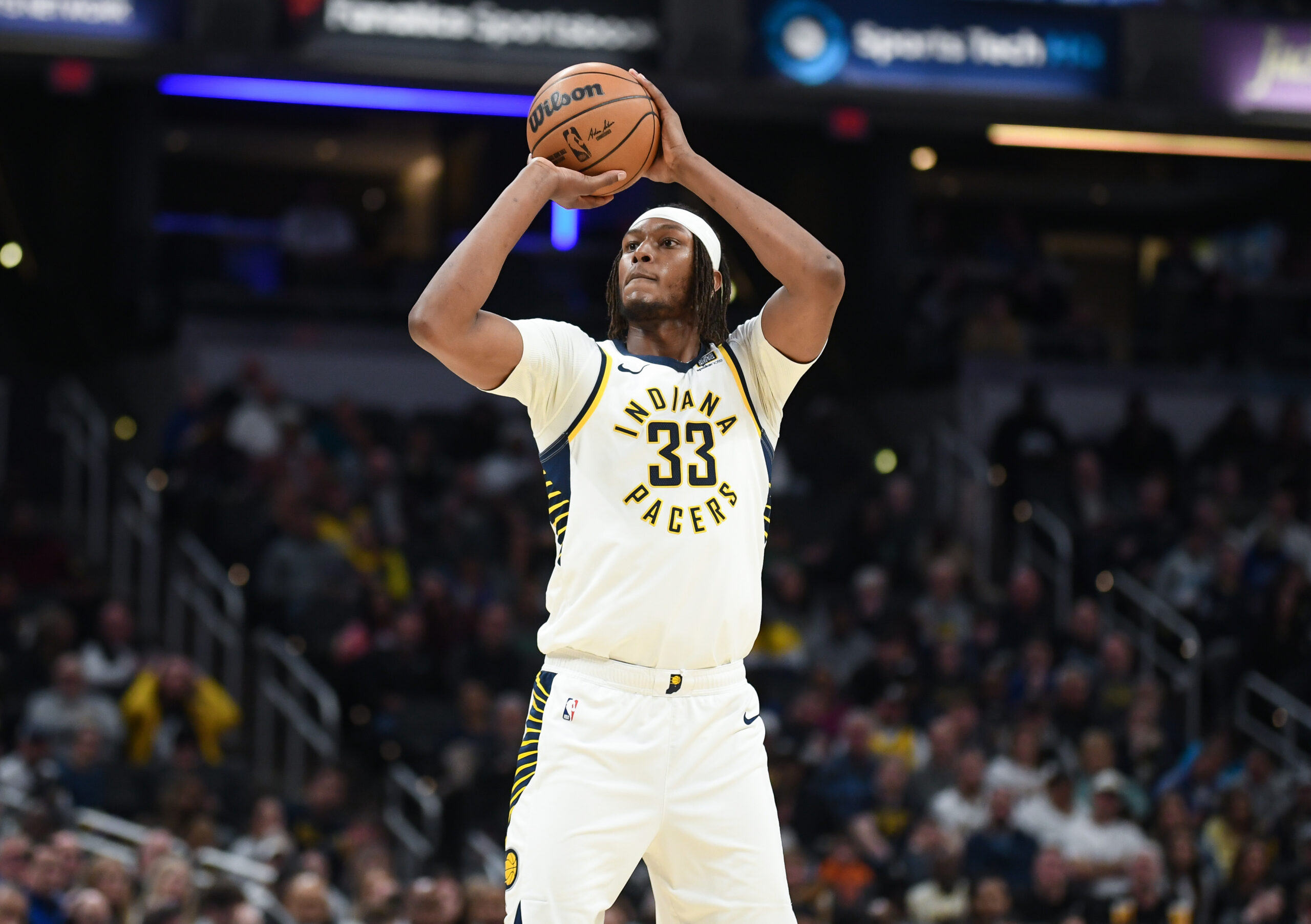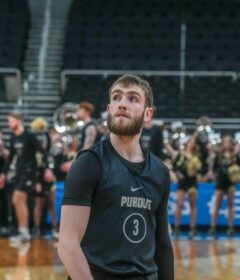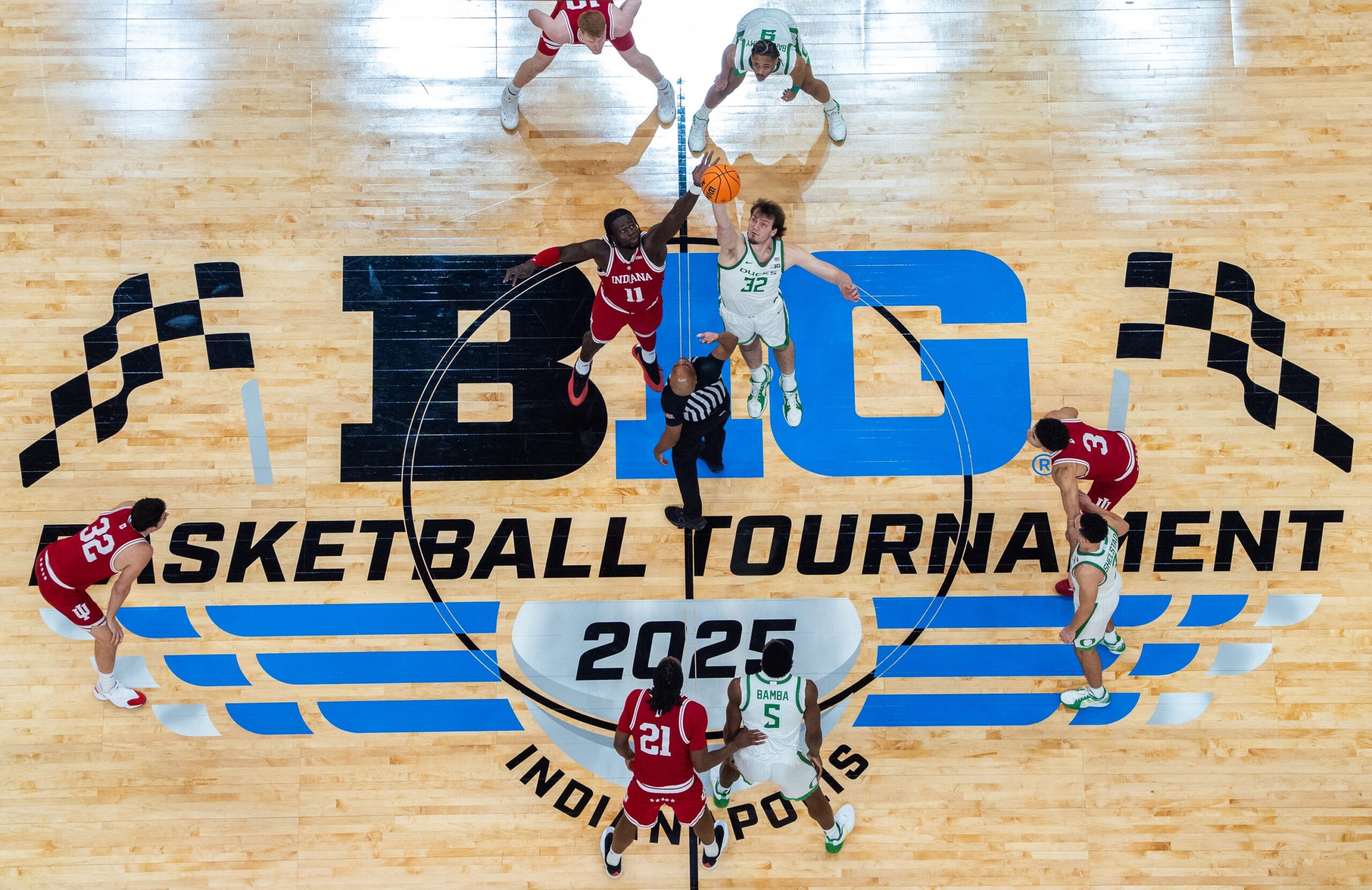2013 Playoffs: Pacers-Heat series breakdown
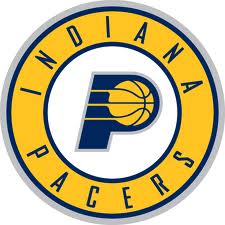
By CHRIS GOFF
ISL Correspondent
Keys to the Series
For the Pacers to have a chance, they’re going to need to win a game – probably two – in Miami.
There’s an ongoing concern about whether Dwyane Wade (26.2 points per game against the Pacers in last season’s second round) has a functional right knee. Look for the Pacers to utilize their post-ups as a weapon against the smaller Heat.
Miami’s experience could also be a major factor – they’ve got the look of a tested champion, and other than Ian Mahinmi, no Pacers have played in a conference finals before this year.
Otherwise, the Pacers will need even better play from Paul George and Roy Hibbert than those stars provided in the first two rounds, and they’ll be thankful they may not face Wade at full speed.
PACERS
Strengths
Lock it down – From the inside out, the most destructive and suffocating defense in basketball. Pacers led the NBA in points allowed per possession and opponent 3-point percentage and had two players finish in the top 10 of Defensive Player of the Year voting. At every level – Hibbert inside, George on the wing and George Hill at the point of attack – there is an excellent defender, and there are more plus-contributors in Lance Stephenson, David West, Sam Young and Mahinmi.
Mighty frontcourt – George (17.4 points, 4.1 assists per game) remains the best scorer, even stepping up his game in the postseason. West, despite a few ineffective outings in the middle of the semifinals against New York, is the most versatile source of offense. Hibbert, the other primary option, averaged 15.7 points after February 19.
Cool, calm and collected – West and Hill are proven postseason performers who came over from winning organizations, and Stephenson, in his first go-round as a playoff starter, has showed uncommon poise and – so far – no burnout from a career-high 2,687 minutes this season.
Glass attack – Pacers led the league in rebound rate and finished third in the East with 15.3 percent of their points scored on second shots. There is no underestimating the length factor – Pacers are all taller, some of them by four or five inches over their counterpart, and as they proved against New York’s rotating, trapping defense, awareness and positioning go a long way for them.
Weaknesses
A turn for the worst – Because of the offense’s reliance on always iffy post-entry passes, George’s rising turnover count and Stephenson’s mostly horrible ballhandling the last two months of the season, there is still justifiable concern about the Pacers’ execution. On the positive side, however, Stephenson, who will have to beat the defense of Wade, had only five turnovers in three games against Miami this year and also has that nearly mistake-free series against the Knicks in the last round to fall back on.
No wing man – The Pacers only have one shooting guard or small forward, Sam Young, in the current bench rotation, although Hill has been sliding over for capable minutes on the wing.
HEAT
Strengths
Big numbers – Though they don’t have quite the depth or balance of options as some great offenses of the past, the Heat can score points in bunches. They led the NBA in points per trip and were second in the East in assist ratio and fourth in free throws attempted. The heart of their lineup – LeBron James (27 points, seven assists per game), Wade (21 points, five assists), Chris Bosh (17 points, 54 percent shooting) and Ray Allen (11 points, 42 percent 3-point accuracy) – is enough to overwhelm most opponents. Shane Battier (136 3-pointers) provides spacing by drawing big men out from the interior.
Calling for backup – James is without doubt the most dominant player the Pacers will face in these Eastern Conference finals (65 rebounds, 37 free throws, 30.0 points per game in six contests in last year’s semifinal matchup), but will not be a one-man show. Pacers must hope this series doesn’t come down to the rare minutes when James will sit. Miami bench, with second-year point guard Norris Cole (57 steals) and their polar-opposite big-man tandem of Chris Andersen (17.4 player efficiency rating) and veteran forward Battier a big reason why they were 31-1 when their reserves outscored the opponent’s reserves.
Weaknesses
Slim chance – The slender Heat frontcourt defenders outside of James – forwards Battier and Udonis Haslem and skinny centers Bosh and Andersen – are suspect against muscular Pacers post men.
Give it back? – Offensive turnover rate, which the Heat saw dragged down by less-than-sure-handed point guards Cole and fifth-year starter Mario Chalmers (combined 223 turnovers), was pretty much league average all year.
Interior reach – Available roster height – they signed Andersen and Jarvis Varnado to add some in the middle of the season – is short in supply compared to the Pacers’.
THE PICK – HEAT IN FIVE
Miami is a team with 66 wins in the regular season and three All-Stars writing a legacy together that is defined by the number of trophies they kiss. James, Wade and Bosh are now surrounded by an improved supporting cast. Allen’s talents as a shooter make him a major weapon off the bench. As a result, the Heat are 45-3 since Feb. 1 and show no signs of slowing down. The Pacers are near the top of the East, but Miami is the top, with a scoring margin (+7.9 per game) that doubled Indiana’s (+4.0). The Pacers are the gold standard in the realm of defense, but Miami is no slouch itself in this department, and there’s no comparison between the offenses. Indiana turns the ball over – a fatal flaw against the swarming Heat defenders – and doesn’t score enough. On top of that, the Pacers are 21-25 on the road this season, and it’s nearly impossible to beat the Heat in their own gym. At 33-12, Miami is the best road show in the league. Expect competitive, physical games but a short series.

